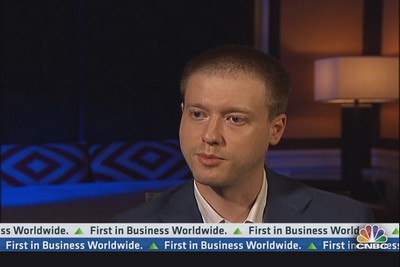Pagoda Blog

Immortality soon within reach? Head Google Engineer at Global Future Congress: Treating biology as software
June 17, 2013
|
|
Published: Monday, 17 Jun 2013 | 7:45 AM ET
By: Cadie Thompson | Technology Editor, CNBC.com

Image source: 2045.com
Immortality may not be a reality yet, but rapidly evolving technology is making it more realistic, Google's engineering director told the Global Future 2045 World Congress. "The life expectancy was 20 1,000 years ago. ... We doubled it in 200 years. This will go into high gear within 10 and 20 years from now, probably less than 15 we will be reaching that tipping point where we add more time than has gone by because of scientific progress," said Ray Kurzweil. "Somewhere between 10 and 20 years, there is going to be tremendous transformation of health and medicine." By treating biology as software and reprogramming cells to treat diseases and other ailments, humans have already made tremendous progress in medicine, Kurzweil said Sunday. Immortality by 2035?
Dmitry Itskov, a Russian multimillionaire, wants to build lifelike copies of humans by 2035 that could eventually be uploaded with the contents of a real human brain. With CNBC's Bob Pisani.
For example, using 3-D bioprinters—which can print the structure of human tissue with biodegradable material—and stem cells, which are used to populate the 3-D printed structure—researchers can grow actually human tissue. (Read More: How 3-D Printers Are Reshaping Medicine) "There's already fantastic therapies to overcome heart disease, cancer and every other neurological disease based on this idea of reprogramming the software," Kurzweil said. "These are all examples of treating biology as software. ...These technologies will be a 1,000 times more powerful than they were a decade ago. ...These will be 1,000 times more powerful by the end of the decade. And a million times more powerful in 20 years." (Read More: Electronic Pills May Be the Future of Medicine) Kurzweil was one of the speakers at the Global Future 2045 World Congress, which is an event that brings some of the world's top scientists together to talk about the future of humankind and technology and the prospect of dramatic life extension. The event at New York's Alice Tully Hall, was organized by the 2045 Initiative, which is a project founded by a 32-year-old Russian entrepreneur named Dmitry Itskov. The primary aim of the project is to create the technologies that will enable an individual's consciousness to be uploaded to a nonbiological host, which would ultimately enable humans to live forever. (Read More: Russian Tycoon Aims to Make Immortality a Reality Using Robots) _ By CNBC's Cadie Thompson. Follow her on Twitter @CadieThompson.
|
Return to Pagoda Blog Main Page |
As your trusted IT service partner, Pagoda Technologies is here to help you achieve your near and long-term business goals through reliable and affordable IT support.
Pagoda Technologies
101 Cooper Street
Santa Cruz, CA 95060
831-419-8000
Pagoda Technologies Inc :: 101 Cooper Street, Santa Cruz, CA 95060 :: 831.419.8000 :: Contact Us :: Privacy Statement
Serving Santa Cruz, Scotts Valley, Aptos, Capitola, Watsonville, Los Gatos, Santa Clara and Monterey since the year 2000.
Powered by Pagoda Technologies Inc | Owner Login



